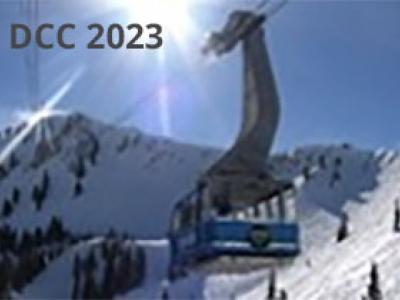
- Read more about Butterfly: Multiple Reference Frames Feature Propagation Mechanism for Neural Video Compression
- Log in to post comments
- Categories:
 43 Views
43 Views
- Read more about Decoder-side Affine Model Refinement for Video Coding beyond VVC
- Log in to post comments
Decoder-side motion vector refinement (DMVR) was adopted into versatile video coding (VVC) and later was further improved in the enhance compression model (ECM) to improve the inter prediction accuracy by refining the motion vectors (MVs) derived from previously coded blocks in merge mode based on bilateral matching. However, DMVR can only be applied to blocks coded with translational motion. Affine motion compensation as supported by VVC can capture more complex motion and thus increases inter prediction accuracy, but DMVR is not applied to blocks coded with affine motion in VVC.
- Categories:
 58 Views
58 Views
- Read more about Lossless Point Cloud Attribute Compression Using Cross-scale, Cross-group, and Cross-color Prediction
- Log in to post comments
This work extends the multiscale structure originally developed for point cloud geometry compression to point cloud attribute compression. To losslessly encode the attribute while maintaining a low bitrate, accurate probability prediction is critical. With this aim, we extensively exploit cross-scale, cross-group, and cross-color correlations of point cloud attribute to ensure accurate probability estimation and thus high coding efficiency.
- Categories:
 69 Views
69 Views
Decoder-side intra mode derivation (DIMD) is a promising coding tool in the enhanced compression model (ECM) developed by the joint video experts team (JVET). In DIMD, the intra prediction mode of a luma block is derived based on the gradient information of the adjacent luma samples at both encoder and decoder, rather than being explicitly signaled in the bitstream. Inspired by DIMD, a decoder-side chroma intra mode derivation (DCIMD) method is proposed in this paper to improve the coding efficiency of chroma intra prediction.
DCC_DCIMD.pdf
- Categories:
 71 Views
71 Views
- Read more about A Low Complexity Convolutional Neural Network with Fused CP Decomposition for In-Loop Filtering in Video Coding
- Log in to post comments
- Categories:
 64 Views
64 Views
- Read more about Gradient Linear Model for Chroma Intra Prediction
- Log in to post comments
In Versatile Video Coding (VVC), Cross-component Linear Model (CCLM) predicts chroma samples by assuming a linear relationship between luma and chroma components. In performing CCLM for video in YUV 4:2:0 chroma format, collocated luma samples are firstly downsampled by a low-pass filter to match luma resolution with chroma, and one linear model of luma-chroma sample pairs is applied on the reconstructed luma samples to generate the predicted chroma samples.
- Categories:
 87 Views
87 Views
- Read more about On the future of decoder-side depth estimation in MPEG immersive video coding
- Log in to post comments
This paper presents the new profile to supersede the existing Geometry Absent profile supported in the MPEG immersive video (MIV) coding standard. The proposed MIV Extended Decoder-Side Depth Estimation (MIV DSDE) profile was developed to cover more diverse use cases and applications based on the decoder-side depth estimation scheme and allow for further improvements of the efficiency of incoming MIV ed. 2, even after the standard will reach its final stage.
DCC_DSDE.pdf
Full_text.pdf
- Categories:
 62 Views
62 Views
- Categories:
 30 Views
30 Views
- Read more about A Study on Data-Driven Probability Estimator Design for Video Coding
- Log in to post comments
- Categories:
 31 Views
31 Views